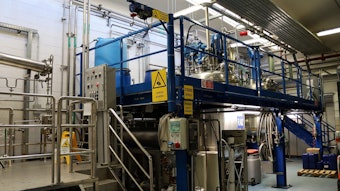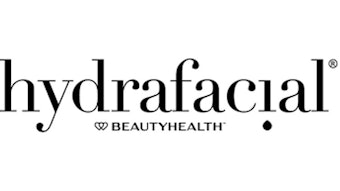Outsourcing manufacturing is a long-standing industry tradition. Both small and large brands outsource some aspect of production, whether they have in-house operations or not. Sometimes less expensive, often more innovative, definitely more agile, contract manufacturers and private labelers are a great alternative in many instances. However, choosing and then properly managing outsourced manufacturing presents many challenges. Knowing where to go, what to ask for and what to expect are essential to succeed.
Managing the relationship is also paramount to be a successful contract manufacturer. New tools and new technologies allow the strengths of both sides of the partnership to be optimized and minimize the difficulties in forging these partnerships.
Today, it is also important to source novel ideas from outside of the company, and even outside of the beauty industry—looking to industries that develop technologies that can be applied to the creation of beauty products.
Consider the challenges of outsourcing from both the perspective of contract manufactures and brands looking to outsource innovation.
Challenges on Both Sides
As anyone who’s been involved on either side of contract manufacturing, brand owner or manufacture, can tell you, smooth runs are often the exception, and frustrations can run high on both sides of the equation.
What are the grievances heard most often? From the manufacturers’ standpoint, clients may have unrealistic expectations for anything from quality and pricing to delays. The proper, needed information may not have been communicated and the people given manufacturer interface responsibilities may not be qualified to be the communicator.
From the buyer’s standpoint, manufacturers quality standards and the number of other jobs they have running—impacts on-time delivery—are among the most frequent complaints. So, where is the truth? Why is a practice that is so old, so used and so beneficial for both parties, as clearly evident simply through its continued employment, still plagued by so many complaints and mishaps?
“Many customers come into this relationship without really knowing what to expect,” says George McLarty, head of operations at Tritech Laboratories—a contract manufacturer based in Virginia. “When you source private label manufacturers, you really need to do a solid due diligence about who you want to work with, and then ask the right questions, making sure you are on the same page with them”.
Many times, there is simply a lack of due diligence.
Basic Considerations
Private label manufacturing is often less expensive than internal operations because internal manufacturing has high overhead. However, this doesn’t mean that you don’t have to pay a decent price for the service. In general, you get what you pay for. When it comes to costs, some companies will give a preliminary quote, others a firm contract. It is important to define what are the rules for operating. What exactly do you get for your money?
Quality is also something that can be defined. Auditing the private label manufacturer thoroughly is an essential step. Understanding its procedures, especially its quality system, will help you make a decision. And that is definitely linked to costs. If you don’t have the internal resources to conduct your own audit, hire someone. This step is not optional, it is paramount to the success of your dealings with this new partner. However, when it comes to quality, everyone needs to be reasonable.
“Often times, clients demand that you do things better than they do,” says McLarty. “They hold you to a higher standard than they hold their own people, but they want to pay less, trying to save money by outsourcing; that is impossible, unless they have very inefficient manufacturing.”
One thing to avoid, according to McLarty, is trying to save costs by outsourcing to companies that do not specifically manufacture beauty products. Manufacturers of household products, for example, do not have to meet standards expected for products intended for personal use, and work differently than cosmetic manufacturers—many of whom employ drug/pharma good manufacturing practices.
Agility: An Advantage If Understood
An additional advantage in outsourcing manufacturing is that these manufacturers are more agile than many in-house operations. They may not always be less expensive, but they will be faster.
Here again, discussing time frame very early on is a key point. Both sides need to know exactly what to expect. Understanding lead times and quality constraints will be a key to understanding delays.
Controls need to take place—it is in nobody’s best interest to ship things under quarantine, for example, to speed up the process. Working properly upstream and keeping a clean timeline throughout the entire process helps eliminate last minute, hurried decisions. Examples such as shipping product under quarantine seems far fetched, but it does, in fact, happen—but you’d be hard pressed in finding a manufacturer who has made this type of decision. As a word of caution, remember, if you are on the brand owner/buyer’s side and sign that order, the consequences, financial and legal, are yours. If the issues and responsibilities are understood, the creativity of outsourced R&D often holds a definite edge over in-house R&D. Therefore, finding good manufacturers with good in-house R&D is especially important.
“R&D in contract manufacturing is often outstanding because companies bring us the products that don’t work, the problems they can’t solve themselves,” adds McLarty. “We have, arguably, very good teams, because they are used to tougher challenges and quicker turn around. Those that have survived the longest are as good or better than in-house teams. There is no way that I can be better than P&G at making shampoo, but for developing novel, out-of-the-norm specialty shampoo, I am better.”
After Due Diligence
One of the challenges in manufacturing off-site, or doing anything off-site for that matter, is communication. Again, asking the right questions and agreeing on the answers is a good start, but there is much more to good communication.
Defining the rules clearly from an operational standpoint is the start. Who supplies the raw materials? Components? Actives? Fragrances? If the contractor does the buying, what kind of quality control do you want to see applied?
And once operations start, it is essential that the information flows freely. Otherwise, you incur delays and losses.
“Coordination is always the most complicated part,” adds McLarty. “It is important for us to really inform the customers on the expectations that they can have, and that goes hand in hand with exchanging information in a timely manner.”
Thankfully, things are evolving. Not all companies can setup their SAP system—a common centralized database allowing cross access to documentation—and those systems do have their limitations. But today, the Web 2.0 applications offer new ways to work around outsourcing and communication challenges.
New Tools: Technologies for Better Outsourcing
Anyone who has sought to keep in touch with friends and family abroad in the last few years knows the value of instant messaging, chat, Internet phone and video conversations with tools such as Skype. Many also use Web-based photo sharing software, such as Flickr, and maintain profiles on FaceBook and LinkedIn.
All these tools are the result of the coming of age of Web 2.0—a relatively new component of the Internet that allows for collaborative work like never before. Web 2.0 has allowed networking to relocate online and explode—with phenomena such as blogs, miniblogs, YouTube, social bookmarking and sharing tools such as Google Docs becoming valuable tools in communicating.
Miguel Membrado—founder of Kimind, a strategic consulting firm focused on Web 2.0— specializes in solving long-distance communication issues, with a goal toward improving how people work together.
“When it comes to the relationship with suppliers, people work side-by-side rather than together,” he says. “They are usually not well-equipped with collaborative and instantaneous communications tools. It creates delays.”
In order for people to be full members of a team, they need to have easy access to each other. It is also something that is essential to monitor and evaluate remote teams’ performance. Using chat and instant messaging tools, for example, puts additional pressure on people to get things done.
When information is produced online, rather than exchanged through e-mail, there is less loss of time and information.
“What is really fundamental,” emphasizes Membrado, “is to work with [contracted] people as if they were part of the same company as you. By using chat and online docs, you ‘fluidify’ the info and remove sources of error.”
In implementing these communication technologies, frequent updates, check- points and landmarks are must haves. Weekly communiques and deliverables should be agreed upon and scheduled to create accountability on both sides. This is a very demanding process because it forces everyone to be equally responsive and responsible. The upside is that things get done on time and everyone has great visibility in the process.
The security of online data is an often voiced concern. Security, however, is becoming less of an issue—and transferring data by e-mail offers no more secure than most online data, at any rate. As tools have evolved, so did protection systems. It is also now possible to create your own environment with controlled access points.
And the benefits cannot be ignored. With reduced delays, comes agility and an ability to react faster to changes. This is a clear plus in manufacturing.
“In certain industrial worlds, the reporting chain on defects can be as long as a month,” says Membrado. “By the time the big cheese gets the information, it is far too late for any meaningful action to be taken. We put tools in place that inform all operators in real time. This improves both the process and the relationships among people. No one is left in the dark.”
And that is a very important point. Those new tools bring a new level of transparency that improves work and guarantees that it is properly done—at all levels. In the long run, the whole work atmosphere benefits from it because no one can hide mistakes or incompetence. In fact, transparency is the heart of these tools and processes.
The Importance of Transparency
Transparency is what will help fluidify the information, make it available to all involved in a process and allow for quick rectification when needed, thus creating a seamless and efficient process.
Today, there is a formidable cultural change occurring at all levels of society—one that demands transparency. As evident in the headlines of the financial pages of world newspapers, opaque processes often lead to short-term success at the expense of the long-term. And Web 2.0 provides new tools with which transparency can be better practiced. It also allows increases in productivity, which had reached a ceiling before its advent. “People used to say: ‘You can’t outsource your core business,” says Membrado. “In fact, I outsource my core business. It is software development, and I no longer have programmers in-house. Everything is outsourced. I work with teams in China and India. It is cost-effective, but is more about price/quality ratio than a pure cost issue. You have to understand that there are costs and efforts involved in outsourcing but that the results are completely worth it.”
Thinking About Creation and Sourcing Innovation
The beauty industry has always looked beyond its own confines to remain creative. However, the limits of those confines have changed, pushed farther by the new shape of today’s business world. What looked far away yesterday is now within hand’s reach, and new opportunities arise. Networks extend globally and new technologies are born every day, pushed by both accelerating research and the ever-evolving demands of the public constantly kept abreast of everything, fed by a continuous flow of information and with unlimited access to it.
If this sounds overwhelming, the feeling is normal. What is happening, at the pace it is happening, is quite unprecedented. What’s being experienced, triggered by the coming of the age of the Internet and globalization, is nothing short of a second industrial revolution. Maybe it should be called a knowledge revolution.
It is a challenge as much as an opportunity to get ahead. Look at new fields, new technologies, new ways to do business, and the magnitude of these possibilities is enormous. However, not everyone has the ability to build a huge network, reaching out to more than one million researchers. But you can start looking at things and keep networks in mind, because they are fundamental to today’s world. In fact, what matters is not to set things in stone—it is to remain fluid. Networks evolve quickly. The way to approach them is not by building set structures, and processes but by giving yourself the ability to receive the information or the opportunities and use them as soon as needed.
Also remember, networks are themselves part of larger networks. They are built based on affinities: business affinity, technological affinity, language affinity, cultural affinity and so on—in short, communities. Communities have many ways to connect, and the points of contact are diverse and varied. There isn’t just one good way to approach networks in the scope of new ingredients and technologies outsourcing—there are many. What is most important to understand is that a single person can, in no way, do it all.
Even when you find an outsourced partner that is good at a number of things, it is essential to know and work with other partners in order to get the best everyone has to offer. It is also important to be organized so as to let all involved function at their best and waste as little as possible.
Life sciences, and most particularly the field of biomedical research, are among the most interesting when it comes to new technologies and ingredients applicable and outsourcable for the creation of beauty products. Understanding both the market demands/desires and the ability to manufacture using these technologies and ingredients is essential in creating new beauty products. In addition, understanding the needs of the industry in which you are sourcing—in this case, life sciences—and those of the industry you are sourcing for, makes the work easier and more efficient. Both industries are similar in a many ways, which makes them a natural fit for each other. However, there are also several things that differentiate them and need to be kept in mind when transferring technologies.
Research teams in academia fields such as life sciences are often aware that there may be applications for their technologies in cosmetics, even though they often do not know how to approach and navigate that field. And for some technologies, you really have to have worked in cosmetics to understand the applications of a given technology. Many biotech companies are not aware of the potential for development in consumer products, or, operating in a heavily funded industry, depend on boards that are wary of doing business with consumer-related industries for various reasons.
Challenges to Technology Transfer
In biotech and pharma, a lot of money is spent upfront in forging development and manufacturing deals. Money is also spent developing products further. This isn’t really the way the beauty industry functions. Both sides have to understand that they need to meet halfway. Beauty companies need to see the value of a very unique and advanced technology, with often times quantifiable results and very real clinical data. Paying to help develop this and eventually owning part of it is a perfectly fair deal. Biotech and pharma have to understand that when it comes to actual profits—not the money spent developing the product—there is little financial realization until products are actually sold to consumers, with profits shared either as royalties or built in the price of the product. They also need to realize the profits are not going to that of a pharmaceutical product.
One way for them to accept this is demonstrating how much easier the process of bringing beauty products to shelf is than trying to get a new drug application approved. Now, the real question is: Are there enough innovations in biomedical research for cosmetics to benefit? From the evidence, more than the industry can actually handle and bring to market.
However, one has to find the real opportunities. Some of them are well hidden, even from their own inventors. Many are not aware of the potential in cosmetic and skin care applications. There are tools for research, tools to help industrial processes, active raw materials, polymers, innovative materials, nanotechnologies out there that people do not see as having potential applications in cosmetics when, in fact, they do.
Once they are found, there have to be people who understand that potential, and who are willing to spend time and some money to acquire them. Additional efforts on an already heavily burdened industry? You bet.
A useful edge in a market where more than ever you have to fight for every consumer, every market share? Undeniably.
These tools are now within anyone’s reach and, as often noted, innovation is no longer an option or something nice to add to your list of things to do next year. It is an absolute must.
Outsourcing—through new technologies in fields that have been thus far unexplored by the beauty industry, or by using partners for what was previously done in-house—and advanced technologies to make those relationships work and build efficiencies is a big part of a successful innovation strategy.
Marie Alice Dibon, PharmD, is the principal at Alice Communications, Inc., helping companies in the life science sector to develop innovative technologies.










